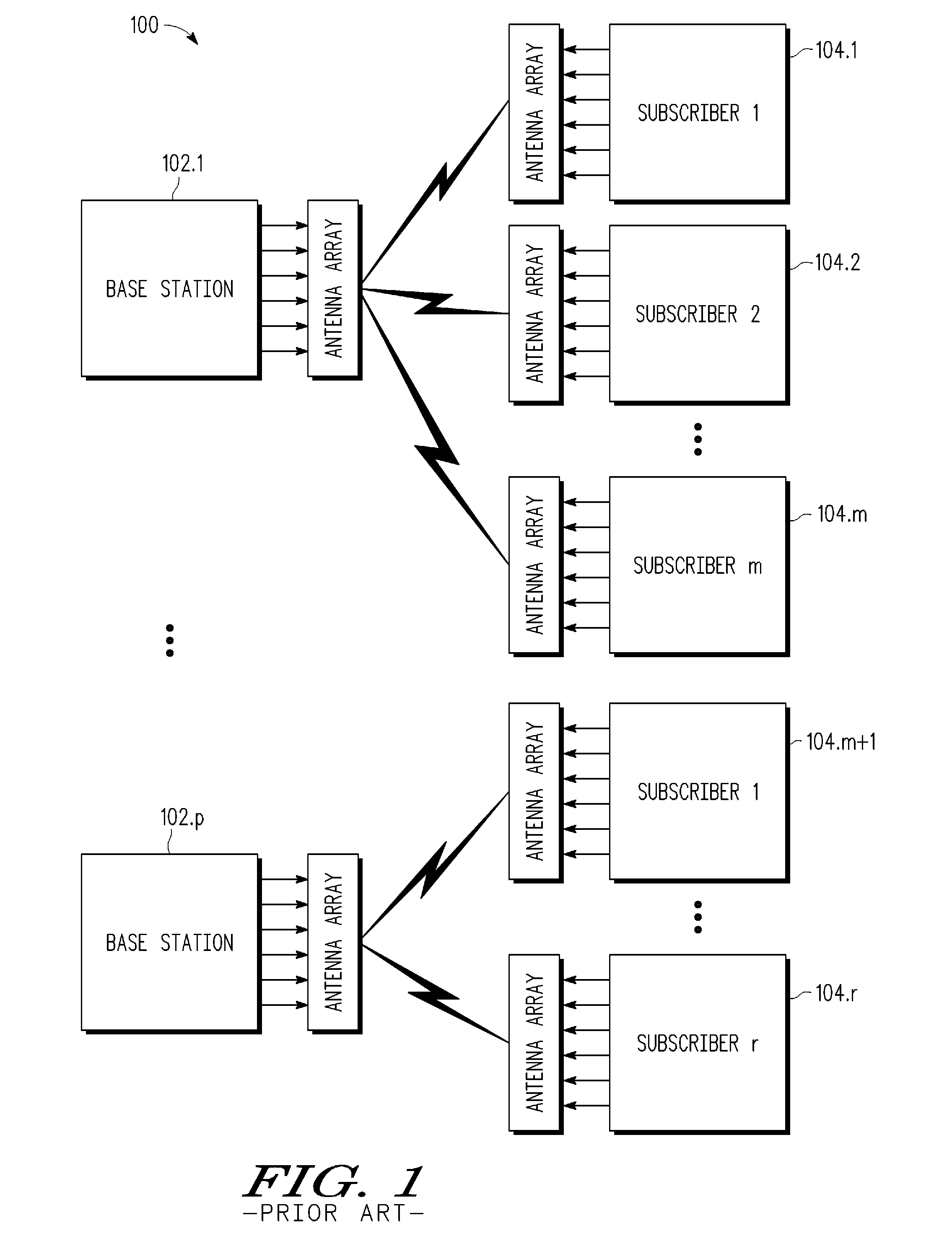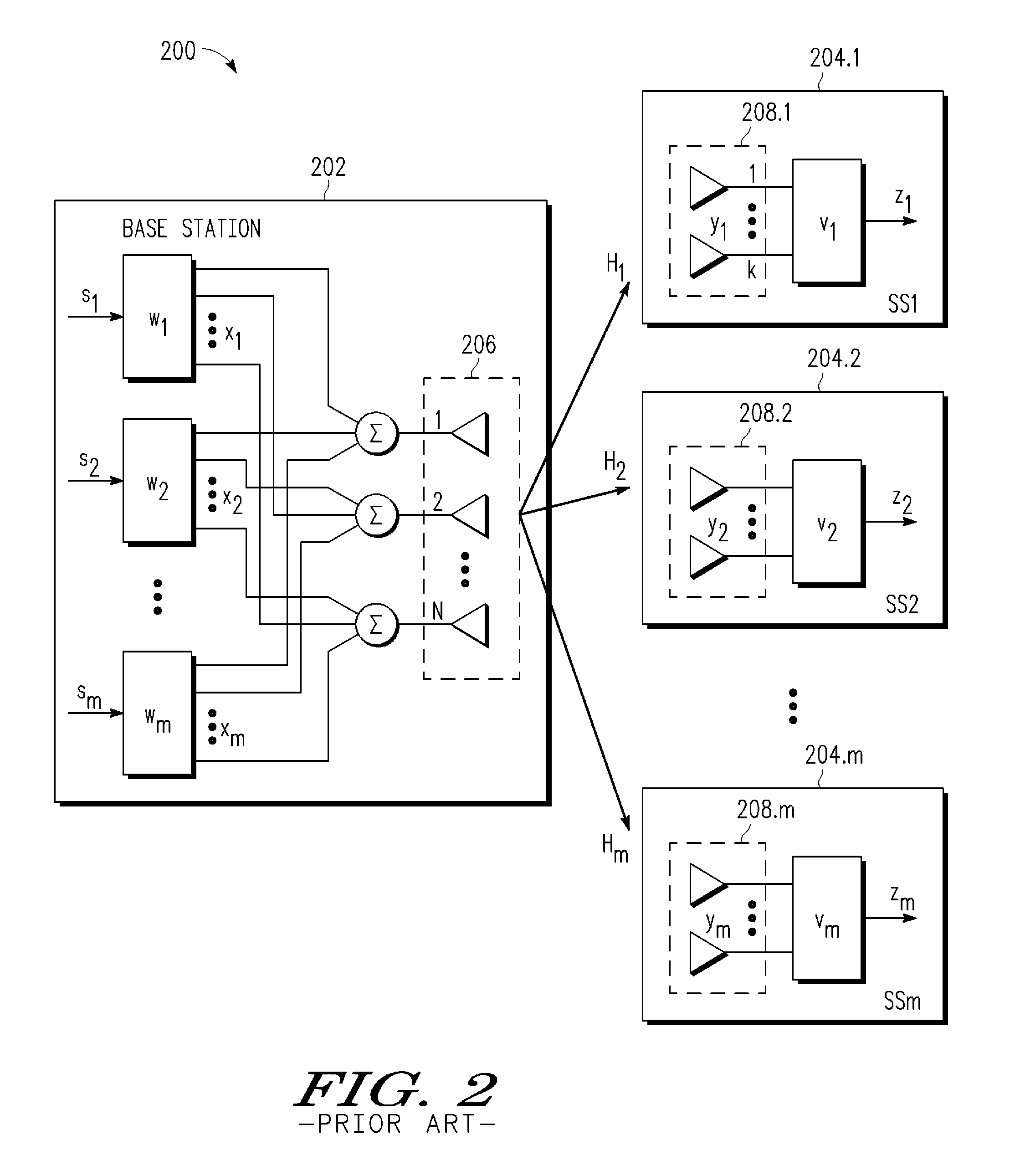Methods for optimal collaborative MIMO-SDMA
a collaborative and beamforming technology, applied in the field of information processing, can solve the problems of limited electromagnetic frequency spectrum, inability to improve spectrum usage efficiency, and inability to achieve optimal collaborative system performance,
- Summary
- Abstract
- Description
- Claims
- Application Information
AI Technical Summary
Problems solved by technology
Method used
Image
Examples
Embodiment Construction
[0024]A wireless MIMO-SDMA methodology and system are described for jointly designing beamforming weighting and combining vectors using adaptive vector space search algorithms. Using the assembled MIMO channel information (e.g., channel matrix Hi) for all the subscriber stations, the base station collaboratively designs the subscriber station receive combining vector vi and the base station transmit weighting vector wi so as to optimize a predetermined performance metric to tradeoff computational complexity and / or the size of control information with performance. In various embodiments, the base station jointly designs the beamforming vectors (v1, . . . , vm; w1, . . . , wm) using design algorithms that search through the entire space of the beamformer vectors to maximize a predetermined aggregate performance metric for purposes of choosing a vector pair wi, vi which maximizes the metric. An example design algorithm searches over the space of all combining beamformers (v1, . . . , v...
PUM
 Login to View More
Login to View More Abstract
Description
Claims
Application Information
 Login to View More
Login to View More - R&D
- Intellectual Property
- Life Sciences
- Materials
- Tech Scout
- Unparalleled Data Quality
- Higher Quality Content
- 60% Fewer Hallucinations
Browse by: Latest US Patents, China's latest patents, Technical Efficacy Thesaurus, Application Domain, Technology Topic, Popular Technical Reports.
© 2025 PatSnap. All rights reserved.Legal|Privacy policy|Modern Slavery Act Transparency Statement|Sitemap|About US| Contact US: help@patsnap.com



